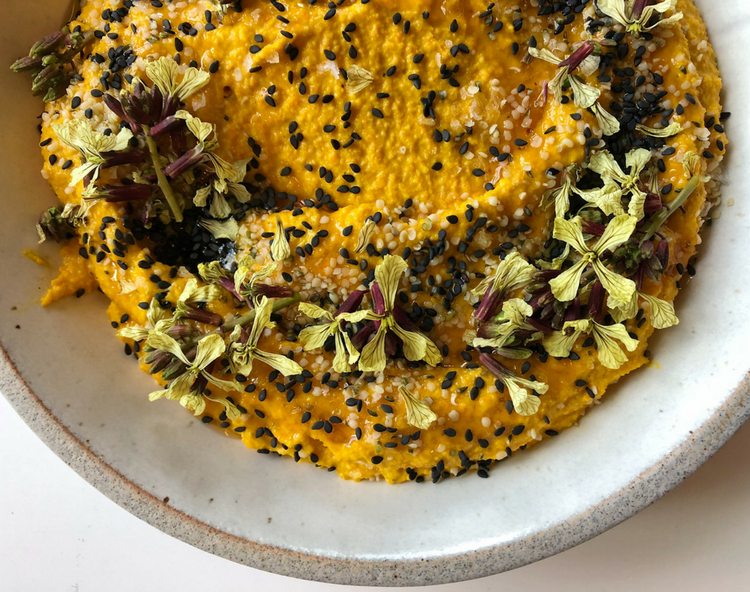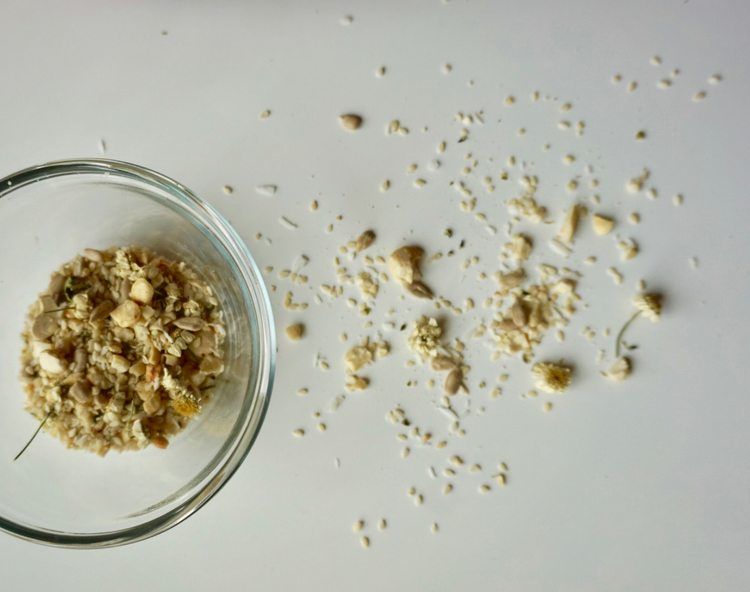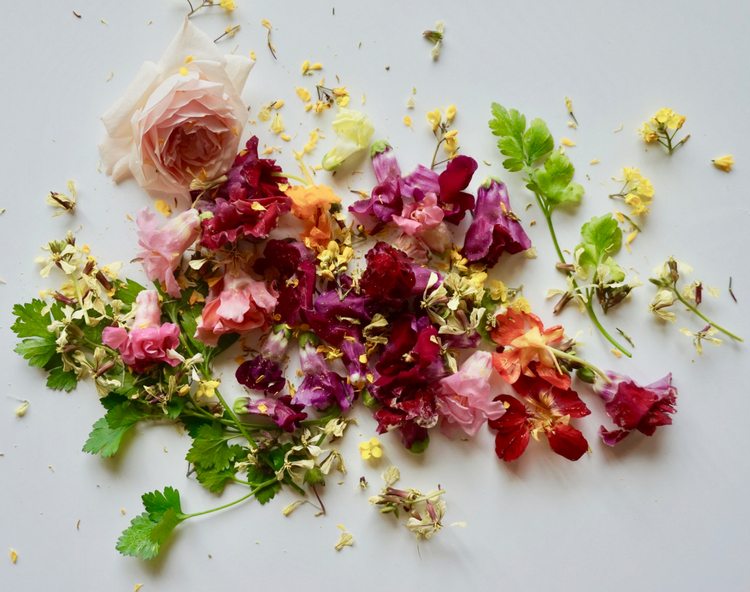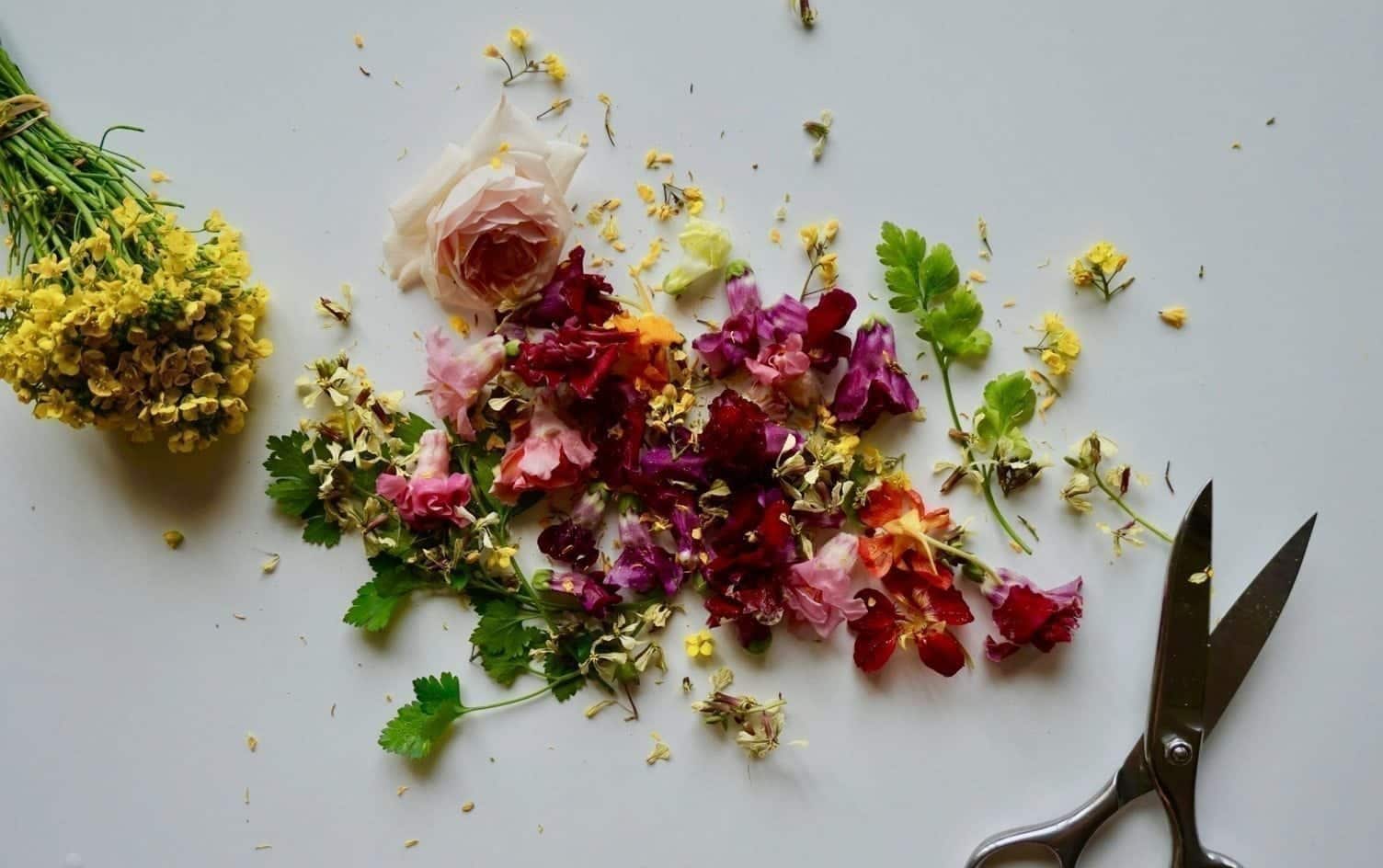Perusing Instagram, you’ll see plates, smoothies and soups adorned with tiny blooms. Of course they make every dish look delicious, but there are other reasons to add edible flowers to your fridge or pantry. Edible flowers add texture, color and flavor as well as an instant burst of lazy-fancy flourish (because, really, they don’t need much done but to pick and sprinkle.)
Below are eight of our favorite ways to bring your spring meals into full bloom with edible flowers:
IN PLACE OF FRESH HERBS
Using the flowering end of your mature herbs is both delicious and sustainable for the plant. Chervil, chives, dill, sage and cilantro blooms shoot up at the end of the season, after the herbs have reached their peaks, and can be trimmed and sprinkled at will. Add them to salads, as confetti garnish for soups or meats and even on savory toasts or eggs.

AS A GARNISH
While flavor matters when it comes to placing petals on your plate, we eat with our eyes first and pretty blooms make a seriously tantalizing statement. Bachelor’s buttons, violets, calendula, carnations, daisies and lilacs all fit the beautiful bill. Nasturtiums are an easy and spicy flower to add to the mix, and they bring a bright, spicy, yet earthy, flavor wherever they go. Mixing them into salads is particularly nice. When deciding where to sprinkle your stems, think of colder dishes rather than juicy, saucy or spicy ones that have a tendency to wilt the blooms.
IN LIEU OF PEPPER
Nasturtium, arugula and mustard blooms are all examples of flowers that pack a peppery punch, and could be used fresh without a grinder. Add the blooms to pestos, salads or even steep the flowers in oil to make a special blend. To do it, use an 80:20 ratio of leaves to flowers, then lightly blanch them in boiling water, shock them in ice and blend with a neutral oil before being strained and drizzled to your heart’s content.
AS A SPECIAL SALT
Everyone has heard of rose water, but what about rose salts? Pesticide-free blooms can be dried straight from the backyard, then crushed with a mortar and pestle then combined with salt, citrus peels or herbs. Hibiscus, anise, lavender and rose are all great examples of flowers that are perfect for this purpose. When making floral blends, keep in mind that light, bright complimentary flavors work best (citrus is a great example.) Steer clear of strong flavors — such as cumin or cinnamon — that are likely to drown out the flavor of the flowers.

IN BEVERAGES
Botanical beverages? Now that’s what spring and summer are for! If you’re very creative with your bar program, botanicals can make excellent syrups, bitters and other accompaniments for the bar. If not, simply garnishing fresh, bright drinks with blooms like rose, nasturtium and geranium will bring some wows to your homemade happy hour.
BLENDED
… or rather, blend them. While it does defeat the purpose of their beauty, wilting edible blooms can be blended into pestos, sauces and dressings to capture the last moments of flavor. A recent handful of quickly fading arugula blooms and a few mustard blooms were a proof that they’re a surefire way to brighten up an avocado dressing, basil pesto or Sunday brunch spread for bagels.
READ MORE > HOMEMADE BATH SALTS
ON DESSERTS
As if you needed more convincing to enjoy dessert, when presenting your final course to a crowd, adding an edible bloom is a showstopper. Violets, cherry blossoms and honeysuckle shine here; many of which you can find in candied versions at specialty stores. Sprinkle them about at will or blanch them and soak them in syrups for a special spot of flavor.

ON THEIR OWN
It doesn’t take a professional cooking background to turn even your backyard blooms into edible masterpieces. Flowering vegetables are an excellent way to enjoy the best of the season; you could batter and fry zucchini blossoms, but their bright flavor can just as easily be enjoyed raw. Collards, kale and snapdragons also have edible blooms that are best steamed very gently or eaten raw.




